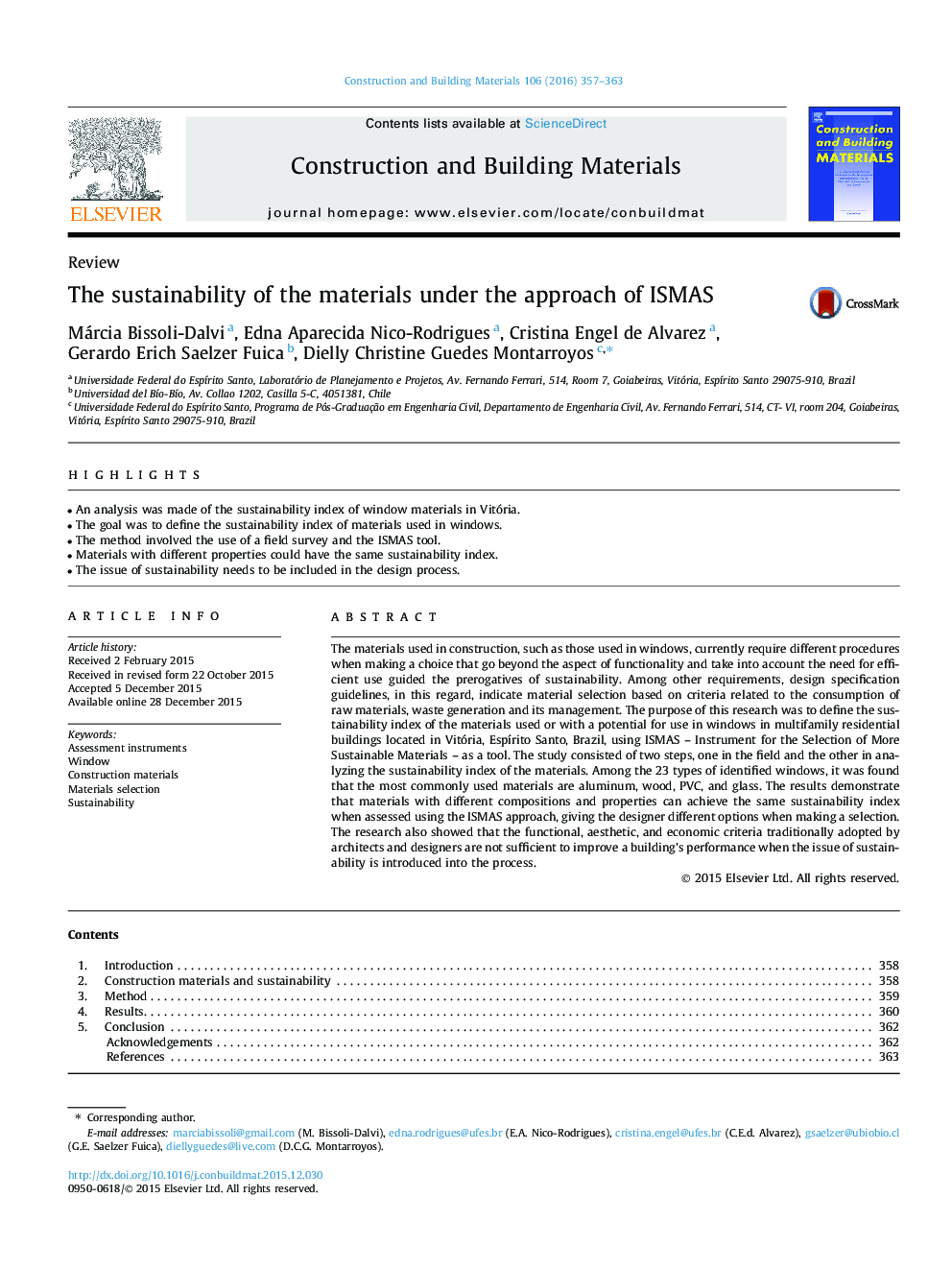| Article ID | Journal | Published Year | Pages | File Type |
|---|---|---|---|---|
| 256461 | Construction and Building Materials | 2016 | 7 Pages |
•An analysis was made of the sustainability index of window materials in Vitória.•The goal was to define the sustainability index of materials used in windows.•The method involved the use of a field survey and the ISMAS tool.•Materials with different properties could have the same sustainability index.•The issue of sustainability needs to be included in the design process.
The materials used in construction, such as those used in windows, currently require different procedures when making a choice that go beyond the aspect of functionality and take into account the need for efficient use guided the prerogatives of sustainability. Among other requirements, design specification guidelines, in this regard, indicate material selection based on criteria related to the consumption of raw materials, waste generation and its management. The purpose of this research was to define the sustainability index of the materials used or with a potential for use in windows in multifamily residential buildings located in Vitória, Espírito Santo, Brazil, using ISMAS – Instrument for the Selection of More Sustainable Materials – as a tool. The study consisted of two steps, one in the field and the other in analyzing the sustainability index of the materials. Among the 23 types of identified windows, it was found that the most commonly used materials are aluminum, wood, PVC, and glass. The results demonstrate that materials with different compositions and properties can achieve the same sustainability index when assessed using the ISMAS approach, giving the designer different options when making a selection. The research also showed that the functional, aesthetic, and economic criteria traditionally adopted by architects and designers are not sufficient to improve a building’s performance when the issue of sustainability is introduced into the process.
